The Power of Inbound Links: How They’re Pivotal For SEO
Before digital marketing, we had celebrity endorsements and expert recommendations. There’d be famous figures holding up products on billboards and trust endorsements from professionals on TV, and these acts would function much similarly to today’s inbound links.
Inbound links, sometimes called backlinks (which we’ll be using interchangeably in this article), are essentially hyperlinks found on other websites that point to yours. As you can see, they’re fantastic digital endorsements, almost like votes of confidence that bolster your website’s authority.
According to Google analyst Gary Illyes, the importance of links to your search engine ranking is overestimated. But while backlinks aren’t a top three Google Search ranking factor anymore, it’s because there are now a lot more nuances to the bigger picture. That being said, they’ll never stop bolstering your SEO strategy and shining several spotlights on your site.
If you haven’t tried your hand at inbound link building before, now’s your chance.
Let’s dig deep into what inbound links really do and how to build the best inbound link profile.
Key Takeaways
- Inbound links aren’t a top three ranking factor anymore, but they still work wonders for any digital marketing strategy.
- Always prioritize quality over quantity with inbound links.
- Use Google’s Disavow Tool if you find that you have been penalized or suspect you will be.
- Inbound links are used as signals to the public and search engines that your content is valuable enough to link to.
- Building high-quality inbound links requires you to earn them.
- Create link building opportunities by creating unique and authentic content, learning how to pitch, finding broken links, capitalizing on trending topics, and building effective relationships.
- Don’t just leave your link profile to its own devices—take a proactive approach and consistently evaluate your inbound links.
What Are Inbound Links?
There’s a reason why the internet is known as the World Wide Web—it’s a series of interlinked threads that connect one page to another.
Inbound links help facilitate this structure by acting as the connections between these threads. This Food52 article titled The Best Vanilla Extract Substitute Is Probably Hiding in Your Kitchen links to an Eater article about how pastry chefs are forced to get creative as vanilla prices soar—that's a great example of inbound linking. This link creates a pathway for readers to get to the Eater site, realize it exists, and potentially discover more.
What if we were on the other end, though, where we’re the ones hunting for inbound link opportunities? Rather than waiting for others to bite and link to our content, some people proactively seek out these connections. But there’s a fine line between showing genuine engagement and spamming website owners. Hit the sweet spot, though, and you’ll secure exceptional backlinks. How do you do this? We’ll go over that method and more in the ‘How to Build High-Quality Inbound Links’ section.
Why Inbound Links Matter for Your Digital Marketing Strategy
Every business needs and wants to rank at the top of Google search results. And that fact alone is why you should care about inbound links.
Co-founder of Authority Hacker Gael Breton put out this poll on X, asking users what they found the most challenging in SEO. Results showed a landslide percentage for link building at 52.3%.
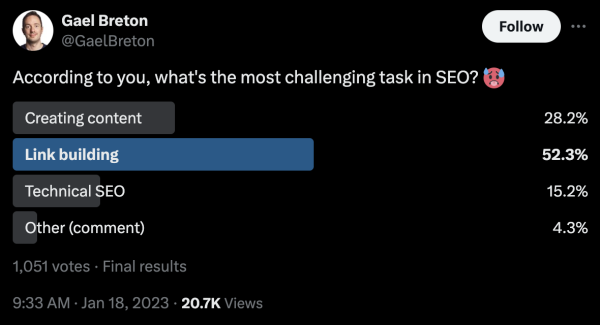
That difficulty could very well be why backlinking is undervalued and potentially why inexperienced marketers don’t always focus their efforts on it.
Despite the fact that we’ve got Google analysts and other experts downplaying the importance of inbound links today, Google Search’s algorithm once held this strategy in high regard. Even more recently, in 2016, Google Search Quality Senior Strategist Andrey Lipattsev placed backlinks in the top three ranking factors.
The reality is that even though they aren’t as important as they used to be, they’re still useful and effective—just not without other SEO strategies to back it up.
While we know what inbound links do now, we haven’t fully gotten to the meat of the matter, which is why they should be part of your digital marketing strategy.
Backlinks matter in SEO for three main reasons:
- They improve your organic search rankings.
- They drive referral traffic.
- They bump up your site’s authority and credibility.
The reason why search engines have backlinks as a ranking factor in the first place, is because they signal that your content is valuable enough to link to. Google loves relevance, good-quality content, an optimized user experience, and authority, so it’s only natural for it to appreciate inbound links.
If we explore further, we can understand that one inbound link can immediately provide a flock of users who are relevant—they’re already interested in the themes and type of content you offer, which already drives them further along the customer journey. Especially if it’s a site with an esteemed reputation that’s linking to your site, both users and the algorithm will see you as more credible.
While to some degree, the more inbound links the better, there’s no question that quality plays a big role in the equation. Every business has what’s called a backlink profile, whether they’re aware of it, actively manage it, or neither.
A strong inbound link profile will show natural growth over time and have backlinks:
- From reputable websites with high domain authority
- That is relevant to your industry
- From a variety of sources like news sites, blogs, and social media platforms
- With diverse anchor text
There’s not enough emphasis in the world to stress how much Google values authenticity. If they sniff out any manipulative link-building tactics, you might as well shut down your site yourself.
There’s a much higher emphasis placed on really good, authentic content nowadays because Google wants to steer clear of spam and low-quality content in the search algorithm.
How to Build High-Quality Inbound Links
The number one rule of thumb when you want to build high-quality inbound links is that you need to earn them.
We won’t waste any time with shortcuts and subtly shady strategies—we’ll show you exactly how to attract backlinks the right way.
Create awesome content
The law of attraction for inbound links, per se, is creating and publishing brilliant content. It’s the most organic way to attract links from other websites, as they’ll naturally resonate with your content and want to link to it.
What’s considered “awesome” content? Purpose. If it comes with sound solutions, worthy insights, or even unheard-of perspectives, other website owners will be inclined to reference it in their own material.
It’s sort of like when you come across content from Forbes, National Geographic, or Psychology Today. They’ve built up such a powerful reputation in their respective industries through authoritative content, positioning them as backlink heroes. Their stuff is interesting, high-quality, and shareable; all incredible signals that are bound to garner all sorts of engagement too.
There aren’t hard and fast rules for what makes a good blog post, for instance, but there are guidelines that you’ll want to implement. For one, you’ll want to avoid thin content—depth-wise and length-wise. SEO experts say that you should keep posts around 1,500 to over 2,000 words, which is a much higher number than it used to be. Go too high (>4000), though, and you’ll end up with the opposite effect.
Aside from being the perfect length, it also needs to have value. Don’t forget you’re in potential competition with hundreds to thousands to hundreds of thousands of other pages that could hone in on the same topic.
So go ahead and do a deep dive into what’s out there right now. If you are planning to write about “cafes in Hong Kong,” you can start by typing that into Google.
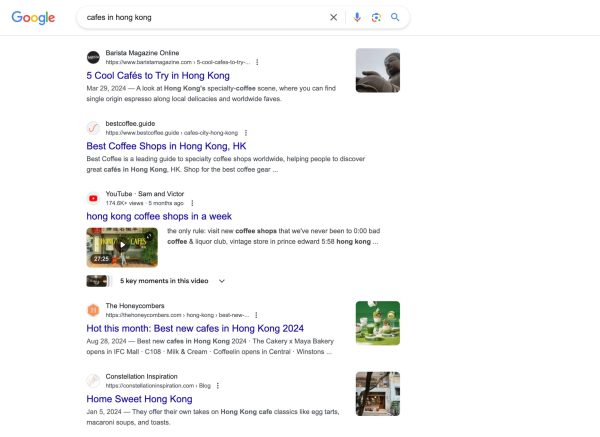
The key here is to review the most relevant and top-ranking items and ask yourself:
- How long are these posts?
- Is there first-party research involved?
- What format are they using?
- Do they include visuals?
- How old is the content?
—as well as any other questions that will reveal why they’re so successful. After your bout of research, make your own content that is inbound-link-worthy and stands out above the rest.
Make entirely original content
Building upon our first method of “creating awesome content,” another idea would be to make completely original content. By completely original, we mean providing on-the-ground reports or data that no one else on the internet has. If websites want to source that specific data, they’ll have no choice but to link to your website.
Of course, this is a huge step up from “awesome content,” as there’s an inherently higher difficulty level. The first course of action is to make sure there is strictly nothing similar available on the internet. A quick tip is to cover a niche topic that hasn’t been explored yet in your industry. Perhaps you decide to take a year-long trip visiting every state in the U.S. and experiencing all the major food festivals. You could then do a comprehensive write-up of the trip in detail—now that’s something foodies and culinary experts would want to read about.
People crave a compelling story, so when something is engaging and original, it’s bound to go viral. And virality is undeniable for generating buzz. Sure, there may be countless first-hand articles from experts on the Aspen Food & Wine Classic, but a rundown of major food festivals in America in every state throughout an entire year? Probably unheard of.
Craft a good pitch
Writing should always be concise and clear, and this rule isn’t any different when it comes to your pitches. If you were confronted with a block of text vs. single lines, it’d probably be much easier to figure out what the email is about in the latter. This is exactly why bullet points and bold formatting exist—to highlight the most important aspects of a text.
All while you’re crafting that brief pitch, you’ve also got to emphasize why on earth the recipient shouldn’t just send it to the trash. While there’s obvious value for you in this arrangement, you need to show the website owner what they get if they use inbound links to your site.
To pitch is to sell yourself, so include multiple benefits for the recipient. Perhaps you’ll extend a blog post olive branch that links to their articles, ebooks, and other content. Or maybe you’ve got a pretty great following that you can boast about. It’s all about finding ways to showcase value.
Pinpoint broken link opportunities
If it ain’t broke, why fix it? But if it is, why not take advantage of that and fix it yourself? Broken links aren’t fun for anyone, not the readers or the website owners. Website owners don’t want their well-curated posts to lead to a dead page. Readers don’t want to be intrigued by something only to hit a dead end.
That’s why this is such a unique opportunity for inbound link building. Once you spot a broken link, you can become the solution provider and suggest your own relevant content as a replacement.
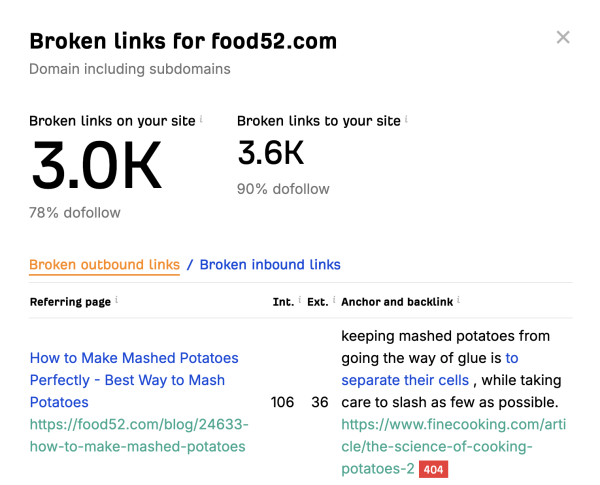
Does this mean you have to scour every website in your niche to find them? Luckily, no. There are a variety of web-based SEO audit tools or dedicated broken link checkers that will give you a comprehensive list of all the pages with dead links. From there, you can figure out where your own content fits and send over a cold email.
Build real relationships
Being your authentic self online and mentioning your website organically is often the start of building strong relationships with others in the industry. When people see your brand or name, they’ll immediately associate it with you.
Without a real presence online, people are more likely to feel disconnected or suspicious of what you have to offer. Have one, however, and you’ll start to engage with the right crowd.
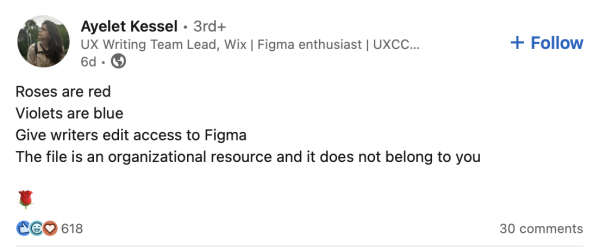
You don’t have to follow the generic LinkedIn format or get overly serious on Facebook, either. Inject some personality into your posts, and forget about the corporate lingo. What’s memorable will be the personal stories or humour that you used to convey your message.
An online presence opens up doors to opportunities, including those to do with inbound links. When others see you as an expert or authority figure in your field, you make it a no-brainer for them to reference your content.
Put together a one-of-a-kind infographic
People love it when things are painless to understand and deal with, which is why infographics have been such an effective way to earn inbound links. They’re “easy” in more ways than one. They’ve got that eye-catching, easily digestible format, they’re quick and fun to share, and they come with interesting and credible insights.
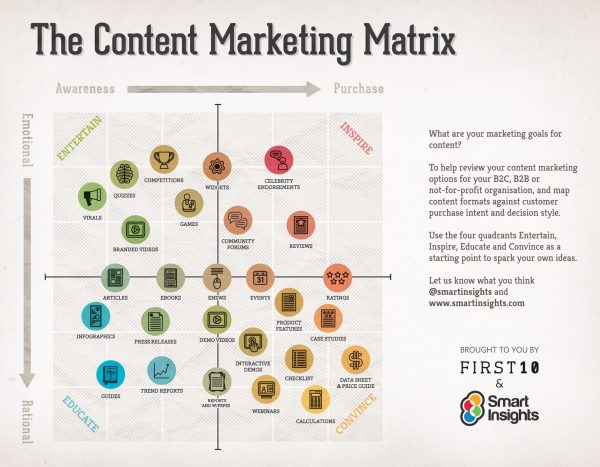
Source: Smart Insights
This infographic created by First10 and Smart Insights is a quadrant chart that helps marketers decide what the best marketing approach is for their goals. It’s a cool, colourful chart that can be shared and added to tons of content to illustrate strategic marketing decisions.
The chart has some valuable information, attractive visuals, and an easy-to-follow layout.
Although creating a great infographic can take some time, you can use data collection tools and free design platforms like Canva to shorten the process.
Take advantage of trending topics
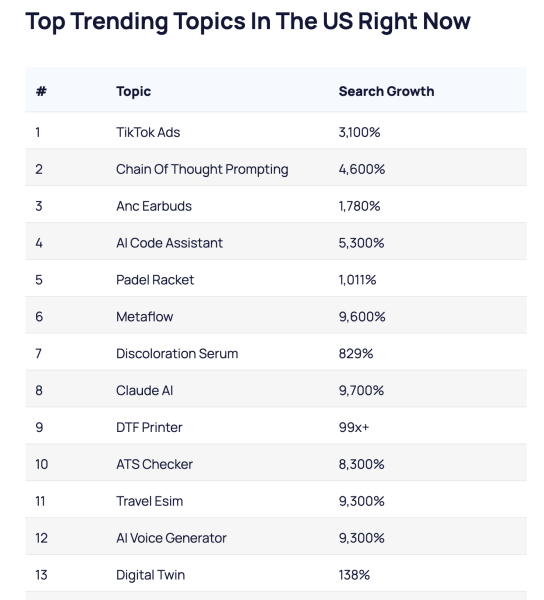
It’s one thing to tap into a trending topic, but it’s another to stay two steps ahead and capitalize on trends before they peak. Proactivity is the name of the game here, and there are tools and platforms like Google Trends, Exploding Topics, and X’s trends page to keep you in the know. Pick the right subject, and you could seriously up your chances of earning high-quality backlinks.
This process involves more than just publishing and hoping for the best; it involves classic tactics like SEO optimization to rank higher in search engines and make your content more visible to the right people.
You might not have even known about some of these topics you’ll find on trending topic sites, like what is Chain Of Thought Prompting? Is there a reason why there’s a surge in talk about Discoloration Serum? These trends are another opportunity to satiate people who are seeking out more information.
Evaluating Link Value and Performance
Remember when we mentioned the concept of a backlink profile? If you really want to hone in on link building as a mainstay in your SEO strategy, you’ll need to adopt an active approach to it. When inbound links start cropping up, the key is not to just see an accumulation of links as a win in itself. Instead, consistently monitor each one in terms of relevance, quality, and impact.
Here are all the factors you want to monitor for:
- Traffic to the Domain – While domain authority used to be a high ranking factor in link value, it’s been replaced by overall traffic to the domain. What that means is that regardless of the source, the overall traffic that your website receives, including organic and paid, is a huge determinant of link value. This has a strong link to your website’s perceived authority, and it shows a strong likelihood of brand visibility and improves referral traffic (another factor on this list).
- Relevance – Is the site linking to your content relevant to your niche? Or is it night and day, where the linking site is a Formula 1 site linking to your blog about gardening? While relevance is important, it’s not a make-or-break—it just might not contribute as greatly to SEO efforts.
- Link Placement and Anchor – Search engines crawl the body of content more than anywhere else on a site, so having your inbound link well-placed within a relevant block of text is the best-case scenario. And it’s not just where the link is that matters; the anchor text used should also be descriptive and aligned with the linked content. This in itself is a fantastic signal for relevancy.
- Engagement Metrics – When readers have clicked through to your site, have you ever wondered how they engage with it? If you see high bounce rates (visitors are leaving fast and aren’t interacting), it could mean that your context isn’t fitting into their expectations or there’s something about it that isn’t engaging enough. These sorts of metrics will help you figure out if your inbound links are doing their job.
- Referral Traffic – Not all traffic will be divided equally between inbound links—there’s going to be a handful of links that drive significantly more visitors to your site. Find out your highest-performing links, and you can foster lasting relationships with them or mimic those strategies to hopefully reap better results.
Disavow Low-Quality Links – There’s a chance that you might realize that you’re the unfortunate victim of poor-quality or unnatural links. We say “victim” here because even if you aren’t an accomplice, you’ll get penalized for these spammy tactics. Maintaining a solid link profile goes further than optimization and also involves cleaning things up. Bad backlinks should always be “disavowed” ASAP if you’re said to have violated Google’s quality guidelines or you suspect it’ll happen soon.
Keeping Your Link Profile in Tip-Top Shape
Link profiles are a living, breathing part of a strong SEO strategy. It’s something that needs to be nurtured, just like content quality, user experience, and other aspects of technical SEO—you wouldn’t neglect it yet expect it to produce extraordinary results.
Inbound links are a strategy that have been around since the dawn of the Google algorithm, so clearly, they’ve earned their stripes and maintained their merit.
